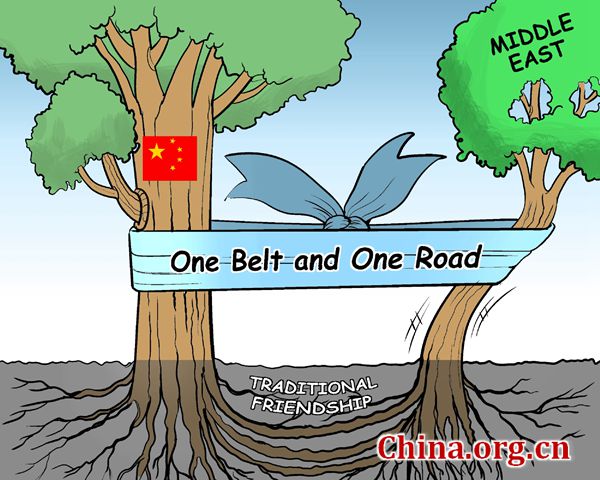Xi's visit highlights China's new Middle East role
- By John Ross
 0 Comment(s)
0 Comment(s) Print
Print E-mail China.org.cn, January 19, 2016
E-mail China.org.cn, January 19, 2016
|
[By Jiao Haiyang/China.org.cn] |
Xi Jinping's visit to Egypt, Iran, and Saudi Arabia this week takes China's President to three of the Middle East's most important states – a region which is simultaneously one of the world's most important, with some of its greatest natural resources, but also one of the world's most politically troubled. China's foreign policy is significant for all aspects of the region as well as its global context.
Economically the convergence of interests between China and the Middle East is evident. China has overtaken the U.S. to become the world's largest center of industrial production while the Middle East is the world's largest energy producer. Simultaneously the U.S., traditionally the Middle East's largest customer, is now aiming to use expensive fracking technology to achieve energy self-sufficiency while China is the world's largest oil importer and the Middle East the world's lowest cost oil producer. China and the Middle East's common economic interests explain why the two are geographical anchors for China's Silk Road Economic Belt and the 21st Century Maritime Silk Road – the two summarized as Belt and Road.
Iran is not an Arab country but the economic framework of China's recently adopted Arab Policy Paper applies to the entire Middle East. Its center is a "1+2+3” cooperation pattern taking energy as the "core,” infrastructure construction and trade and investment facilitation as the two "wings,” and three high tech fields as areas for development.
But the Middle East cannot be analyzed purely from an economic perspective and other dimensions create wider aspects of Xi Jinping's visit which are of key interest to many areas of the world.
The Middle East is the region in which errors of U.S. foreign policy have had the most catastrophic consequences. The U.S. 2003 Iraq invasion, and similar initiatives following it, initiated a process destabilizing the entire Middle East with consequences far beyond it.
Prior to the U.S. Iraq invasion, "jihadist” terrorist organizations had primarily been confined to Afghanistan, where they had been initially financed by the U.S. in a struggle against the USSR. In the Middle East rulers such as Iraq's Hussein, Libya's Gaddafi and Syria's Assad, whatever their other features, were determined enemies of "jihadists” reducing them to a fringe and virtually powerless position.
The U.S. Iraq invasion totally altered this, leaving jihadist organizations, culminating in ISIS, in control of large areas of that country. The same process then unfolded in Libya following U.S. bombing. It was also developing in Syria prior to Russia's recent military intervention on Assad's side.
The newly strengthened jihadists, empowered by the U.S. destruction of governments which opposed them, then spread terrorism into Europe, symbolized by the Paris terrorist attacks, strengthened terrorist organizations through large areas of Africa, and propelled the refugee crisis in Europe. China was also touched, if less powerfully, with ISIS pledging support for separatists and terrorists in Xinjiang and separatists in Taiwan. U.S. allies in the Middle East, particularly in the Gulf, were the main source of finance for such jihadist organizations as ISIS.







Go to Forum >>0 Comment(s)